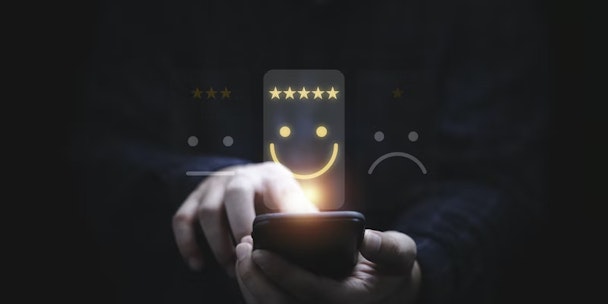Move aside millennials, the customers of 2030 are redefining the CX
It may be hard to envision the future but, as marketers, we’re always trying to be one step ahead of the curve. That means looking ahead to the end of the decade to imagine what 2030 (and beyond) will look like. To do that, marketers need look no further than Generation Alpha – who are redefining the expectations of customer experience (CX).

To reprioritize customers, brands need to reconfigure their communication methods
“Generation Alpha refers to those born after 2010, the same year the first iPad was released,” clarifies James Stokes, enterprise team lead UK&I at Infobip. Having grown up in an entirely digital world, Gen Alpha will grow up alongside instant on-demand technology and always consume information and entertainment online. And they will expect no less from the brands they engage with and buy from.
The ‘Customer of 2030 – the catalyst for change in CX’ panel, hosted by The Drum as part of its Digital Transformation Festival, explores the rise of Gen Alpha and questions their increasing purchase power to consider how their habits may transform customer experiences and expectations.
“By 2030, Gen Alpha will be decision makers,” adds Stokes. “They signal a new generation at the helm and marketers need to get ready.”
“Gen Alpha are a fascinating audience to work with,” agrees Katja Sizova, global tribe leader, digital marketing and e-commerce, direct to consumer at Philips. “They make up a large part of the population in most countries, so their purchasing power by 2030 is expected to be huge.”
Redefining categories and communication
The question is how brands can captivate their attention span early on. Philips is already working on propositions that target their needs. Take male grooming for instance.
“We’ve identified the importance of emotionally engaging with teenage consumers as they’re learning to embrace a new healthcare routine,” says Sizova. “Partnering with consumers from a young age means we can aspire to journey together through their different life phases.”
Philips has already adjusted and improved its offering to appease potential Gen Alpha customers – by creating products that aren’t gender specific. “The new generation don't look at things as such,” says Sizova. “It’s more about who needs to deal with body or hair care; and that’s valuable. We’re actually looking at ways to redefine categories and co-create with our consumers.”
Brands keen to communicate and keep up with Gen Alpha need to embrace flexibility; “what works for one generation doesn't always work for another,” says Stokes. He believes the rise of e-commerce on smartphones will force brands to continue pivoting and experimenting, noting that “new consumers will expect instant seamless digital experiences across the same channels they use to interact with friends, family and colleagues.”
To reprioritize customers, brands need to reconfigure their communication methods. Thankfully, changes to data collection later this year will pave the way for this by providing brands with direct access to first, second and third-party data.
The panelists agree that this means they can extract key information to improve customer communication and personalization options, with Sizova saying that “direct access to data points will mean brands can serve customers with their best interests.”
Practice what you preach
Obviously, no one knows what the technology landscape of 2030 will look like, but it is guaranteed to continue evolving. Brands should question their data use and consider automating responses and adopt new platforms like WhatsApp to communicate with their consumers.
But Stokes adds that they should also keep abreast of consumer attitudes around environmental and social strategies. “Sustainability and social justice are areas where Gen Alpha will be looking to hold brands to account,” he says. “Businesses need to practice what they preach.”
Many establishments are already taking these action points on board and prioritizing CX for their users. Stokes credits efforts from supermarkets that are providing high tech shopping solutions for customers – a demand that was accelerated during the pandemic.
“We’re seeing a rise in home deliveries, baskets made for consumers based on previous shopping habits, customers getting recommendations on past purchases, consumers using smart speakers to add items to shopping lists and pre-booked delivery slots,” he says. “These are just some examples of how our industry shifted to prioritize the customer’s experience.”
The end of the decade is not as far as some marketers may hope; time will pass quickly. Sizova urges marketers to make best use of time and encourages them to “learn, engage and understand individual audiences now” and to adapt accordingly.
Stokes agrees, concluding: “Customers of 2030 will demand better communication from brands on their terms and on their preferred channels. Brands need to prepare for that shift. 2030 is not as far away as it might seem so marketers need to get organized today to be able to provide customers experience that lives up to expectations set by Gen Alpha.”
For more insights on Gen Alpha and how to prepare your business now for the customers of 2030, watch the full session from DT Fest here or visit Infobip.com.
Content created with:

Infobip
Infobip is a global cloud communications platform that enables businesses to build connected experiences across all stages of the customer journey. Accessed through...
Find out more